Physics 2212 test 3 conceptual for true false
1/69
There's no tags or description
Looks like no tags are added yet.
Name | Mastery | Learn | Test | Matching | Spaced |
|---|
No study sessions yet.
70 Terms
south pole to north pole
dipole moment points like this
current loops
these produce a magnetic field/force and torque that can orient a compass needle
electric field
this of a point charge: electric field or magnetic field
has distribution depends on the velocity
|A| |B| sin(theta)
cross product - magnitude wise
non-vero velocity
point charge needs to have this in order to exert a magnetic field
zero
value of cross product if two vectors are parallel
Tm/A
unit s of mu-not/4pi
any shape
a loop of current of this shape can generate a b-field
north to the south
magnetic field points this way in a bar magnet
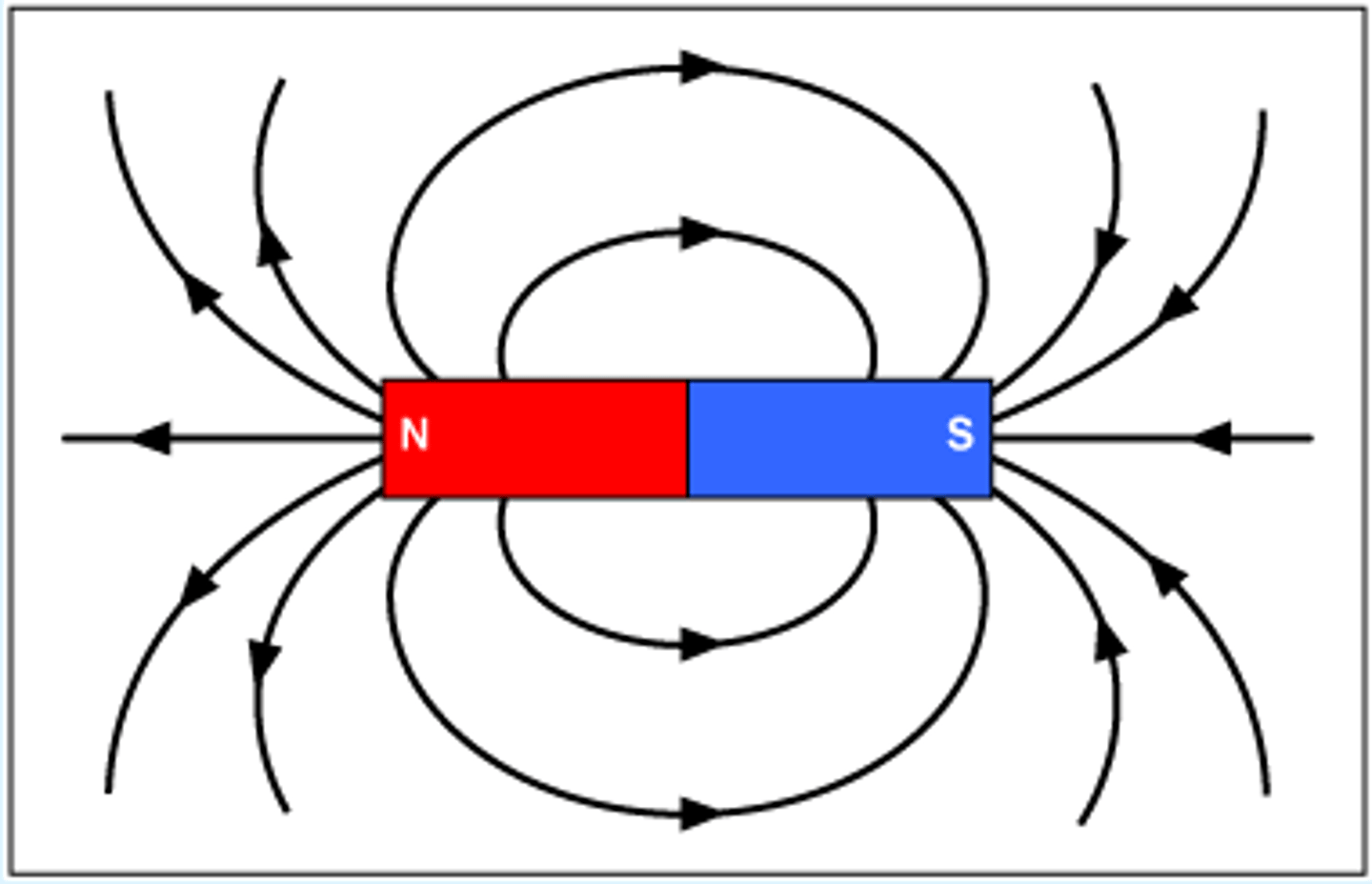
superposition
just like e-field this princple of b-fields holds true - they are not subject to influence by other b-fields
decreases
magnitude of B does this as you move further from the wire carrying current
current never abruptly stops
why is the concept of carrying a current delta(L) unfeasible?
direction of current
direction of the b-field is determined by the
south to north
magnetic dipole points in this direction
spin and angular momentum
electrons have these two properties that help it generate a magnetic field - first one is bigger
ferromagnetic
materials have dipoles aligned in thesame direction in small patches. When a magnetic fieldis applied, these patches align, creating a macroscopicB field that can last for a very long time
like cobalit, iron, etc

paramagnetic
materials have dipoles that can betemporarily aligned in an external B field, but areoriented at random otherwise
aluminum, titanium

Curie's Law
the 𝐵 field has the same symmetries as the infinite wire that produces it. Here, rotational symmetry and translational symmetry.
electric dipole field
when r<
constant, 0 (negligable)
the magnetic field inside an infinitely long solenoid is this, magnetic field outside of an infinitely long solenoid is this
constant, looks like a dipole
the magnetic field inside an finitely long solenoid is this, magnetic field outside of an finitely long solenoid is this
mv^2/r
in perfect circular motion of a charged particle - can set the magneti force equal to this
do this in cyclotron motion
lorenz force
sum of the electrostatic and magnetic forces acting on a body
F = Eq + qvxB
cyclotron motion
The circular motion of a charged particle in the plane perpendicular to a magnetic field - will set mv^2/R equal to the magnetic force
identical/even spacing
in order to use solenoid formula for b-field, this must be present between the rings
dipole moment, mu
only factor affecting magnetic field very far from the closed circuit/bar magnet
toroid
current that wraps around itself
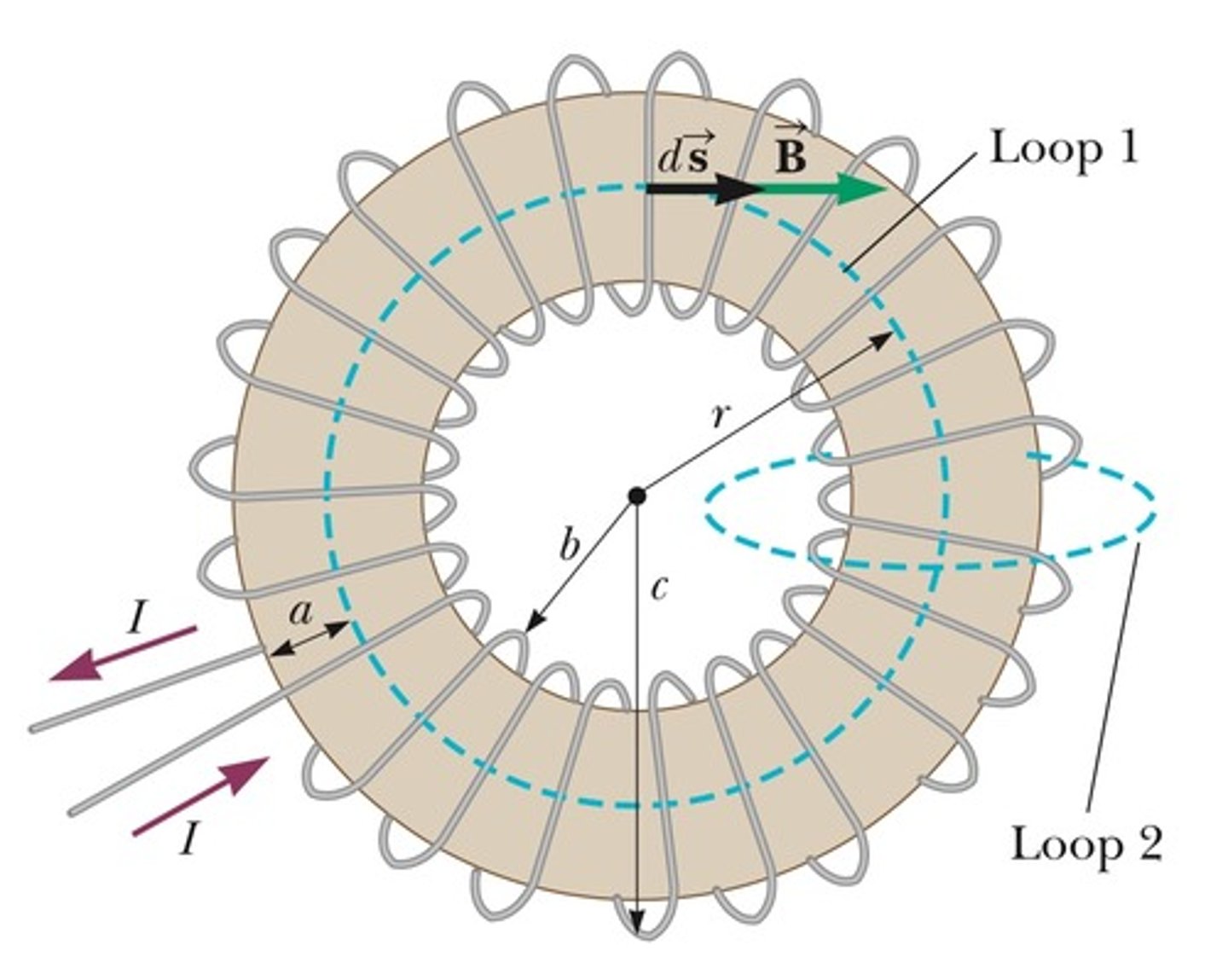
magnetic monopoles
because these do not exist, if you chop a magnet in half you will still get a north and south end
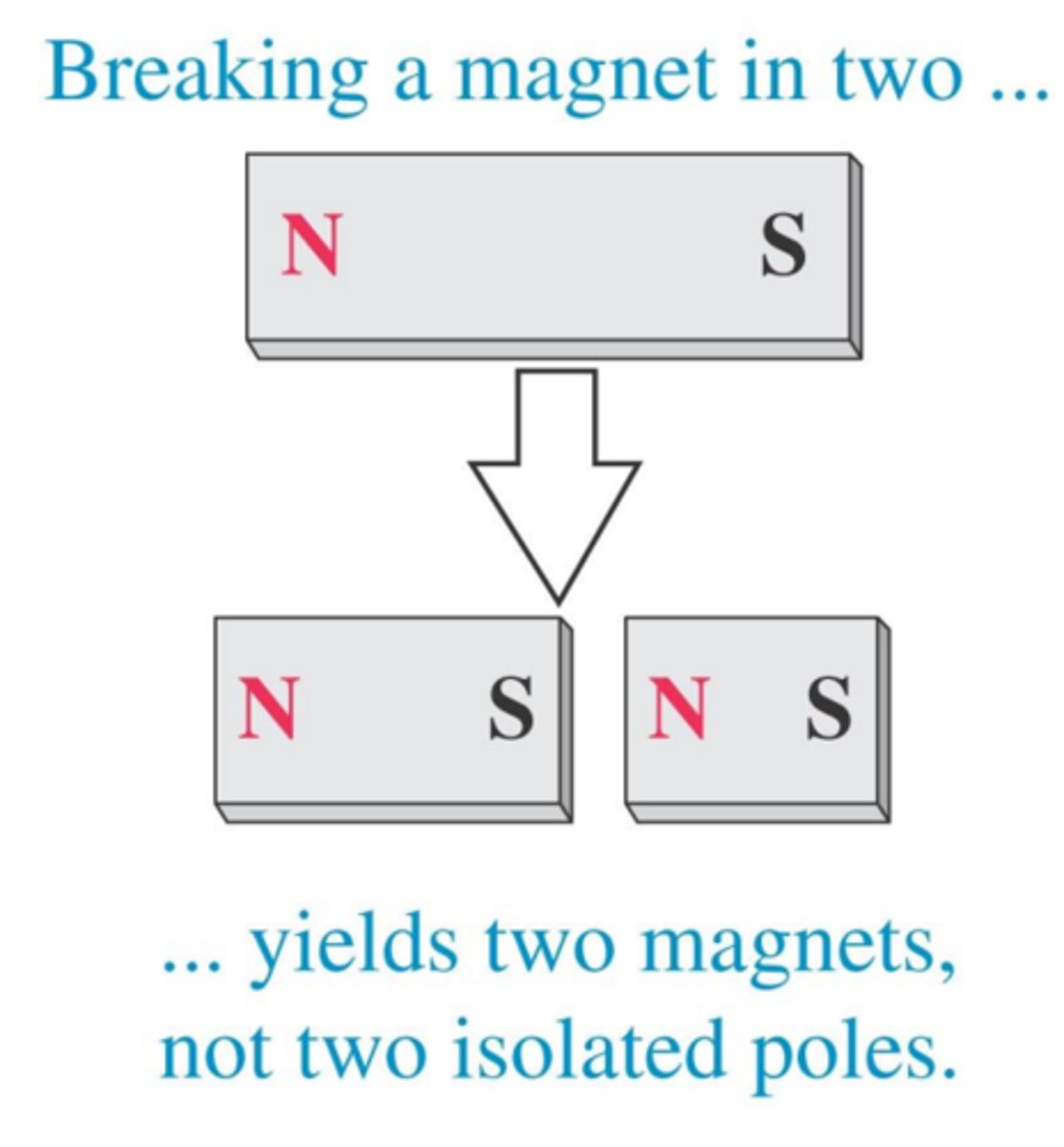
high temperature
this can destroy ferromagnetism
repeled
two parallel currents running opposite to each other will be attracted or repelled?
antiparallel currents
attracted
two parallel current running linearly/same direction to each other will be attracted or repelled?
parallel currents
zero
magnetic of magnetic force on a magnetic dipole bar magnet/coil in a uniform magnetic field or any closed loop of current
zero
work done by a magnetic force on a charged particle in cyclotron motion or a current loop in a uniform magnetic field - as the force can only change the direction not the magnitude of velocity
Hall effect
The phenomenon by which a force is brought to bear on a moving electron or hole by a magnetic field applied perpendicular to the direction of motion. The force direction is perpendicular to both the magnetic field and the particle motion directions.
The Hall Effect occurs when electrons moving through a conductor experience a magnetic field, resulting in a perpendicular force (Lorentz force).
In response, electrons drift to one side of the conductor, creating an excess negative charge on that side and leaving an excess positive charge on the opposite side. This separation of charges generates an electric field, known as the Hall electric field, which balances the magnetic force, eventually stopping further charge separation.
As a result, measuring the voltage across this conductor (the Hall voltage) allows determination of properties like charge carrier density and the magnetic field strength. This phenomenon provides an important practical method for sensing magnetic fields and characterizing materials.
no
is there electric current inside of a bar magnet
spin of electrons
this creates the dipole moment for a bar magnet
Antiferromagnetism
A form of magnetism in which unpaired electron spins on adjacent sites point in opposite directions and cancel each other's effects.
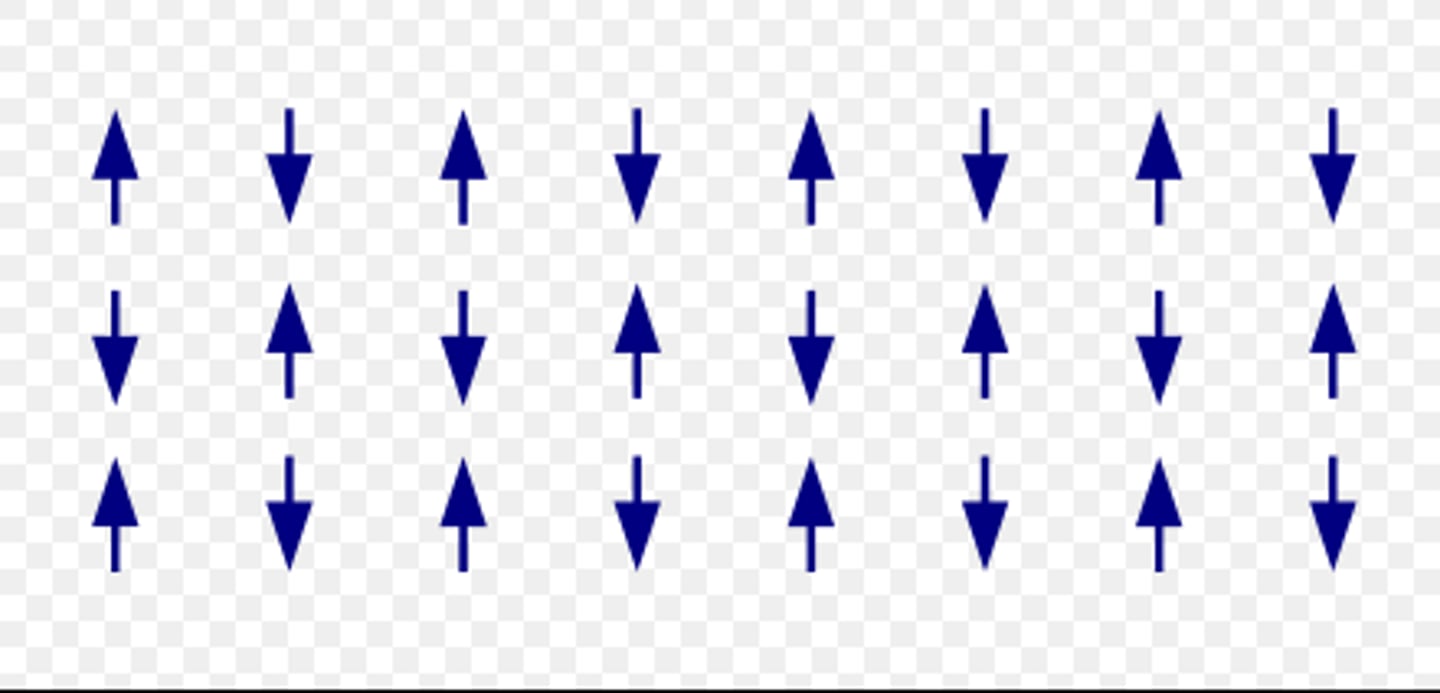
V and B
two things we can change to alter the Lorenz Force for a point particle
torque
a magnetic field does not exert a net force but it exerts a net this on a magnetic moment/dipole
mu in direction of B
torque stops rotating magnet when this is achieved
charged particle moving through magnetic field never does work on a moving point charge
relationship between magnetic field, charged particle, and work
zero
magnetic force on a current carrying wire in a closed loop in a uniform magnetic field
use I*deltaL x B
magnetic force on a current carrying wire that is straight in a uniform magnetic field
perpendicular
normal vector is alligned like this to an area's surface
no
do charges outside of a Gaussian surface contribute to the net flux?
Gauss's Law
total electric flux through a surface equals charge enclosed Q divided by epsilon knot
the Q enc
flux remains constant as long as this remains constant in Gauss's law
will not matter if on or off center
exit the volume
every magnetic field line that enters the volume must also:
Gauss's Law for Magnetism
Magnetic flux through closed surface is zero because individual magnetic poles have never been observed
enclosed magnetic poles will always cancel to 0 - no separation

zero
value of total magnetic flux through a closed surface
non-Coulomb electric field
The electric field due to changing magnetic fields.
closed loop is not zero voltage
lenz's law
The induced current flows in a direction so as to set up a magnetic field to oppose the change in magnetic flux
the negative in faraday's law
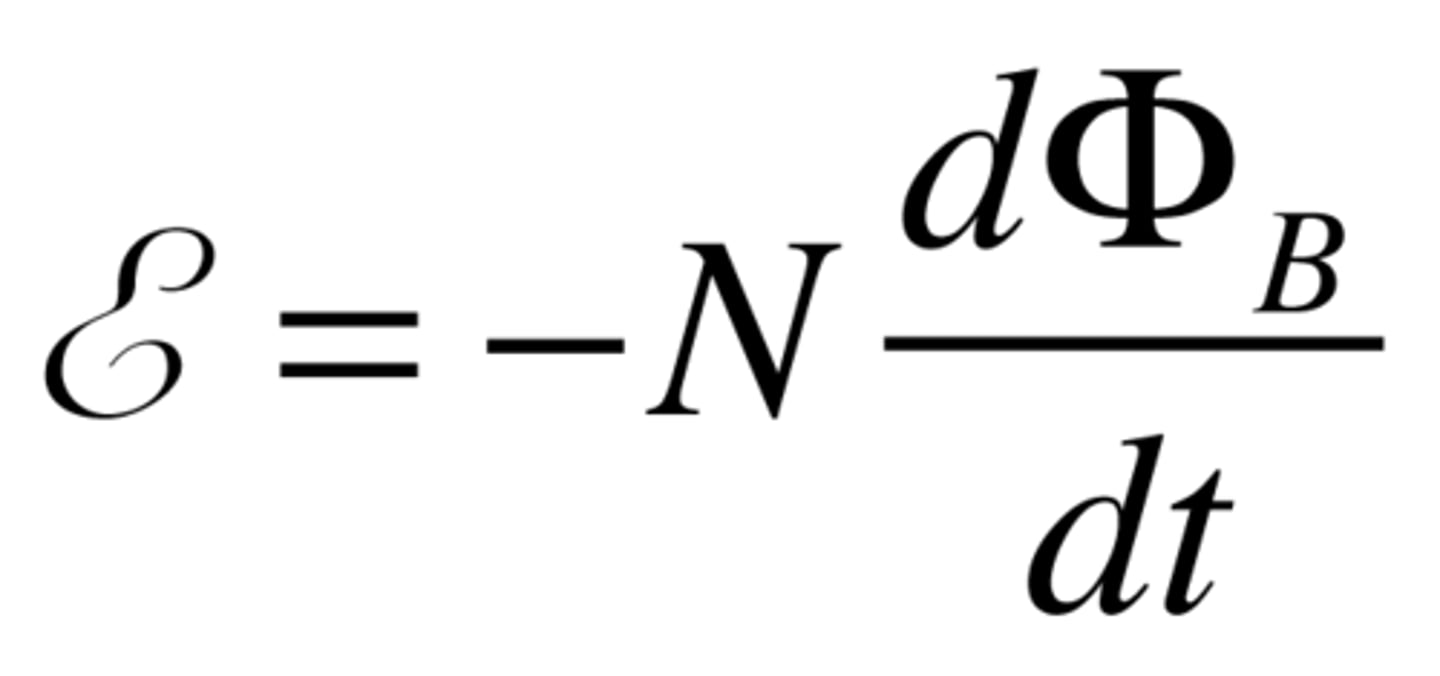
faraday's law
An electric field is induced in any region of space in which a magnetic field is changing with time.
induced current
current in a circuit due to a changing magnetic field
possible due to the non-coloumbic electric field wrappign around the perimeter
same time
if you drop bar magnet through copper pipe with southside down or northside down what will move through the tube faster
1) can guess direction of E.
2) Have near constant E
two paramater's fr Gauss's law
enclose the charge
Gaussian surface must do this
non-coloumbic e-field + emf
what is made from a time derivative in magnetic flux (change in flux)
closed loop integral not equal to zero
what is unique about the non-coloumbic electric field
current is independent to number of loops in a coil
relationship between the induced current and number of loops in a coil
solenoid
A very long coil of wire that produces a magnetic field when carrying an electric current
constant b-field inside of it
Faraday's experiment
Closing the switch in the primary circuit induces a current in the secondary circuit BUT only while the current in the primary circuit is changing
motional emf
The emf produced across a conductor due to its motion through a magnetic field - associated with change in surface
can have a conductor act as a battery
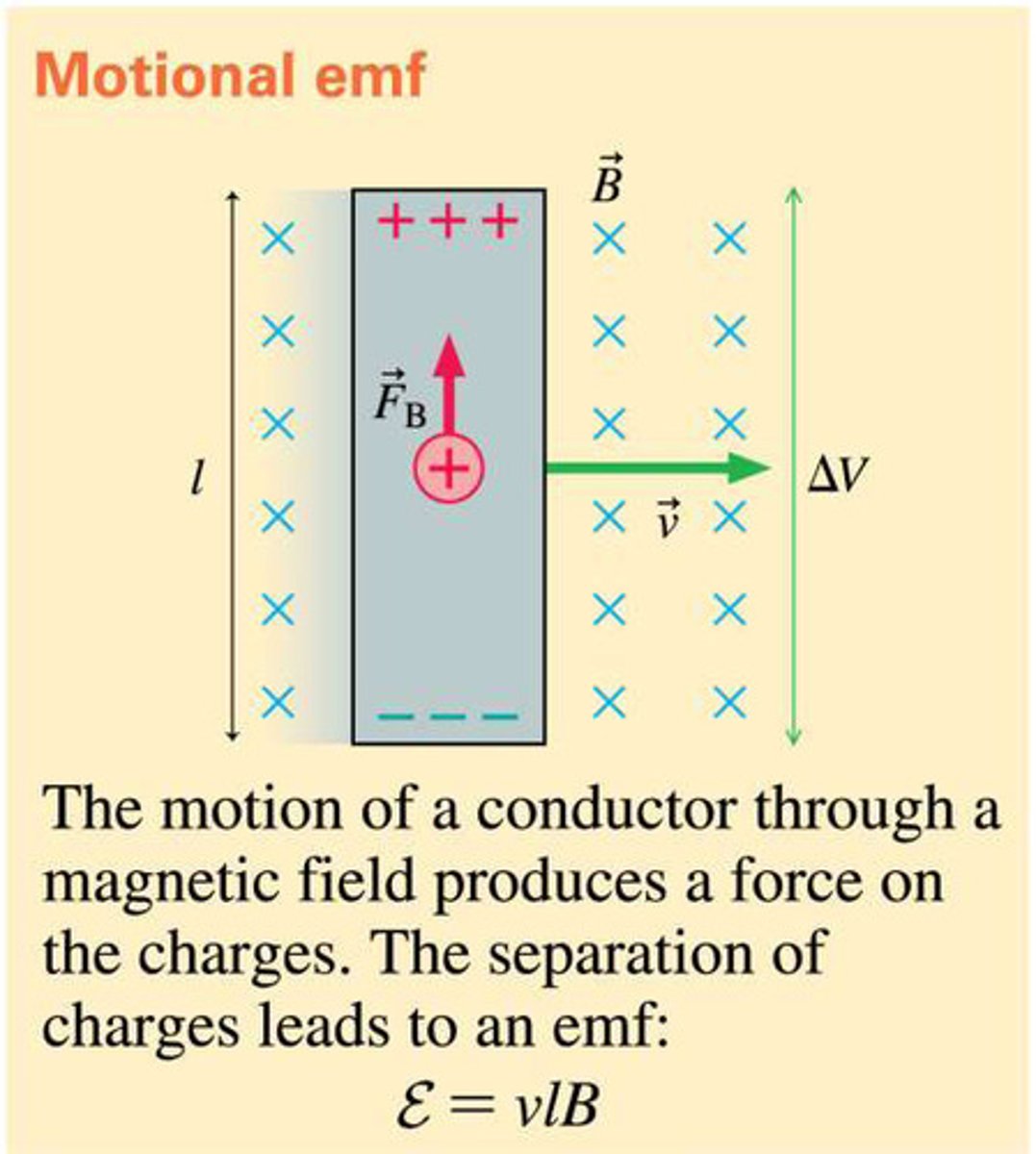
self-inductance
tendency of a conductor to oppose changes in the current flowing through itself
ex: decrease magnetic flux out of the page by decreasing counter clockwise current - nature now makes self-induced counter clockwise current to counteract the original change!
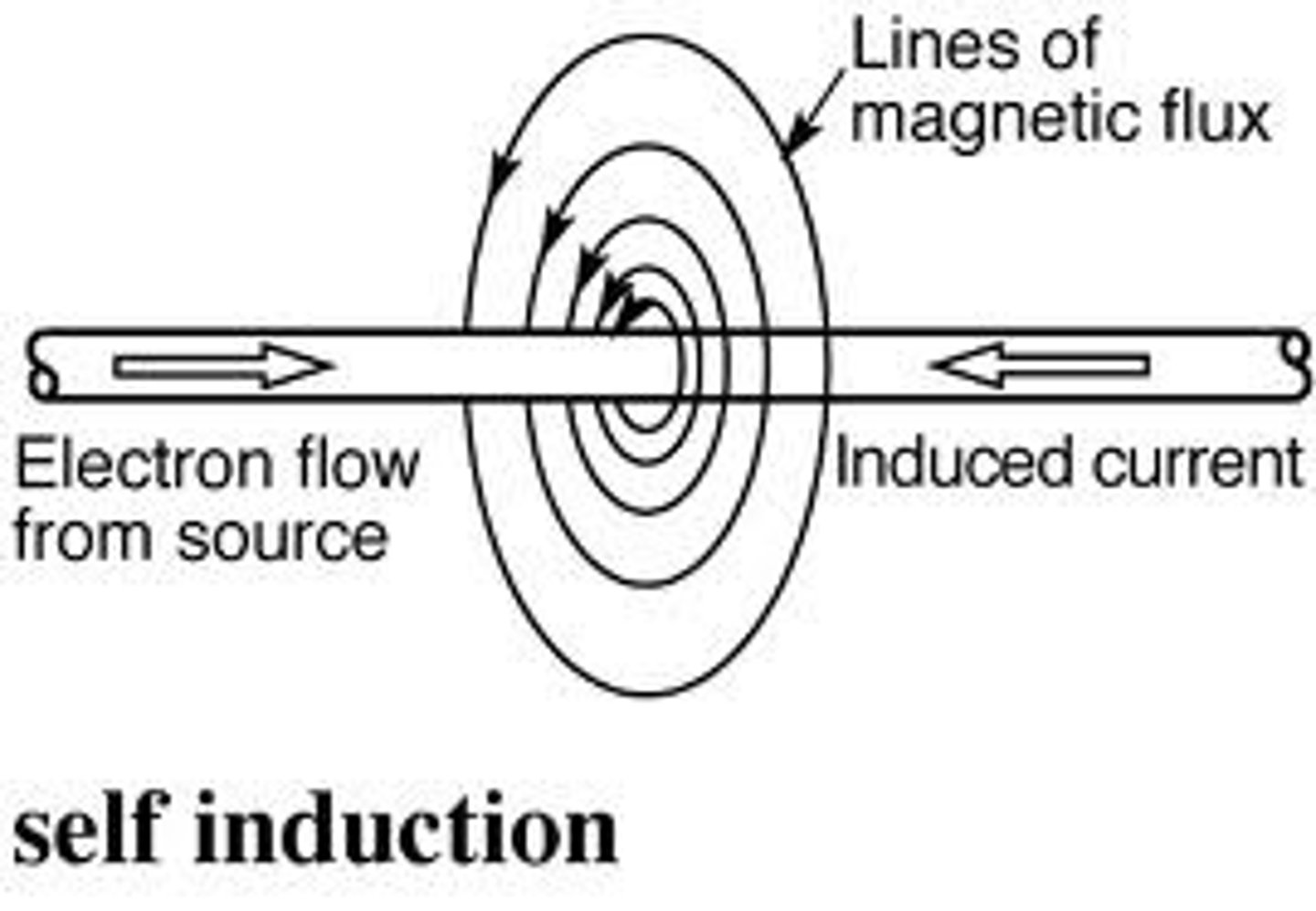
enclose
in order to have change in flux due to a solenoid, the area of interest must do this to the solenoid
true
if change in b-field remains constant than induced current also remains constant
transformer emf
compared to motional emf - this emf is associated with a change in B-field rather than a surface
L * dI/dt
formula for back inductance or the change in current through a solenoid over time
number of turns in a solenoid
ratio of voltages in transformers is equal to this
-mu * B
formula for rotational work/change in potential enegy in a magnetic field of a magnetic dipole
this is a dot B